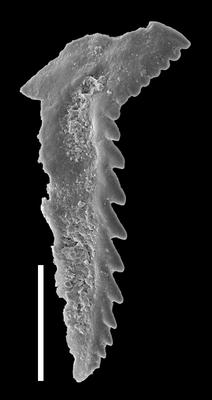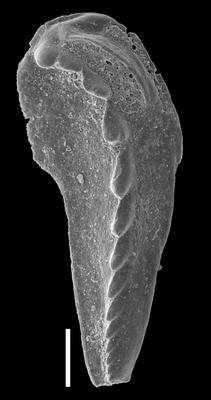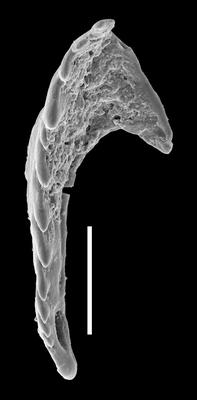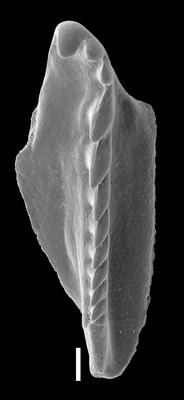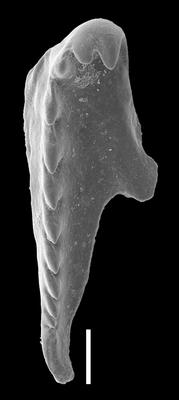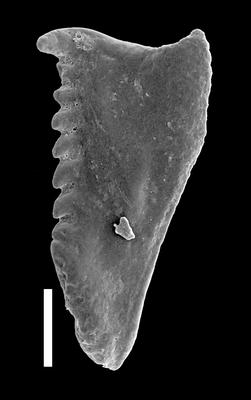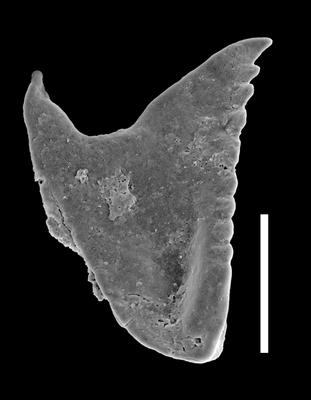Hints et al., 2023
| Author(s): | Hints, O., Ainsaar, L., Lepland, A., Liiv, M., Männik, P., Meidla, T., Nõlvak, J., Radzevičius, S. |
|---|---|
| Year: | 2023 |
| Title: | Paired carbon isotope chemostratigraphy across the Ordovician–Silurian boundary in central East Baltic: Regional and global signatures |
| Journal: | Palaeogeography, Palaeoclimatology, Palaeoecology |
| Volume: | 624 |
| Pages: | 1-17 |
| Abstract | The latest Ordovician and earliest Silurian carbonate succession of the East Baltic region has served as a global reference for studying the Hirnantian mass extinction and global environmental changes recorded in geochemical archives. However, the data from the area have uneven spatial distribution, with the deeper shelf Livonian Basin poorly covered by integrated geochemical-paleontological data sets. Moreover, virtually no paired organic carbon (δ13Corg) and carbonate carbon (δ13Ccarb) isotope records are available from the Ordovician of Baltica, limiting the possibilities for chemostratigraphy and geochemical modelling. Here we studied the Likėnai 396 drill core from northern Lithuania to establish a late Katian to Rhuddanian bio- and chemostratigraphic reference section for the central East Baltic region. Our primary focus was on the Hirnantian carbon isotopic event (HICE) interval, together with the late Katian Parovėja excursion. The latter occurs within the Parovėja Formation, for which the Likėnai core serves as a neostratotype. The drill core was sampled for paired carbonate and organic carbon isotope analysis, other geochemical proxies and four groups of microfossils: chitinozoans, conodonts, ostracods and scolecodonts. The integrated data set allowed us to identify the main Baltic δ13Ccarb excursions in the Likėnai core: Moe, Parovėja and HICE. Additionally, a small-scale but distinct Jonstorp peak was distinguished between the Moe and Parovėja excursions. The Likėnai core is a suitable reference section for the Parovėja excursion as well as the falling limb of the HICE in Baltoscandia. Except for the HICE, the δ13Ccarb excursions were not clearly defined in the δ13Corg curve, and the correlation between δ13Corg and δ13Ccarb values appeares to be weak. However, the paired records co-vary in the HICE interval but have a negative correlation in the Parovėja excursion interval. This suggests different forcing mechanisms and poses challenges for chemostratigraphic correlations using mixed δ13Corg and δ13Ccarb records. On the other hand, the remarkable similarity between the δ13Corg curves from different deeper shelf sites indicates a time-constrained and at least basin-scale nature of these events. Our study highlights the existence of global, basin-scale as well as likely local features, but additional paired δ13Corg and δ13Ccarb data are needed to better discriminate between different scales. |
| Remarks: | pages 1-17 |
| Keywords: | Baltica, carbon stable isotopes, Estonia, geochemistry, Latvia, Lithuania, Ordovician |
| DOI: | https://doi.org/10.1016/j.palaeo.2023.111640 |
| SARV-WB: | edit record |


